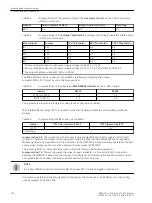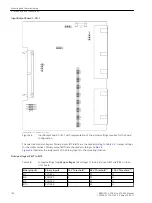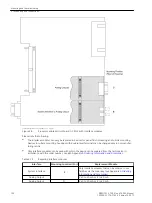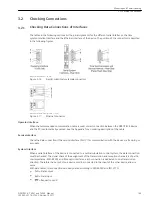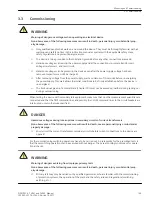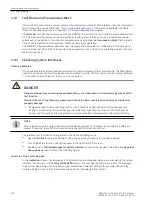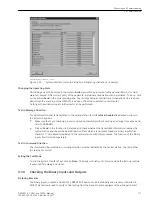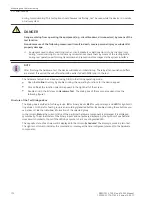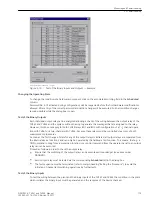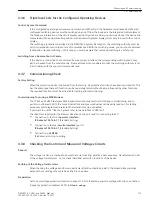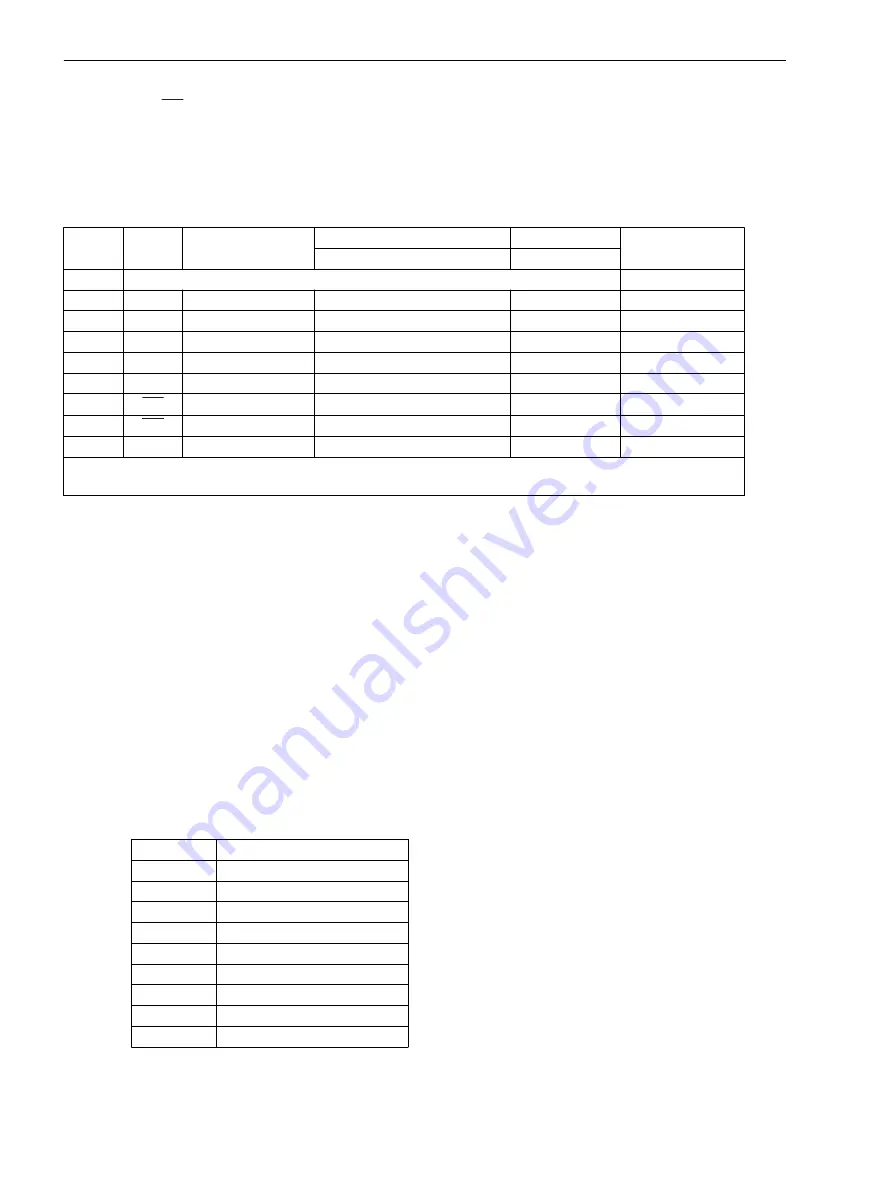
•
CTS = Clear to send
•
GND = Signal/Chassis Ground
The cable shield is to be grounded at both ends. For extremely EMC-prone environments, the GND may be
connected via a separate individually shielded wire pair to improve immunity to interference.
Table 3-16
Assignment of the connectors for the various serial interfaces
Pin-No.
RS232
RS485
Profibus FMS Slave, RS485
Modbus RS485
EN 100 electr.
RJ45
Profibus DP Slave, RS485
DNP 3.0 RS485
1
Shield (with shield ends electrically connected)
Tx+
2
RxD
–
–
–
Tx–
3
TxD
A/A’ (RxD/TxD-N)
B/B’ (RxD/TxD-P)
A
Rx+
4
–
–
CNTR-A (TTL)
RTS (TTL level)
–
5
GND
C/C’ (GND)
C/C’ (GND)
GND1
–
6
–
–
+5 V (max. load <100 mA)
VCC1
Rx–
7
RTS
–
1)
–
–
–
8
CTS
B/B’ (RxD/TxD-P)
A/A’ (RxD/TxD-N)
B
–
9
–
–
–
–
not available
1)
Pin 7 also carries the RTS signal with RS232 level when operated as RS485 Interface. Pin 7 must therefore not be
connected
Termination
The RS485 interface is capable of half-duplex operation with signals A/A' and B/B' with the common reference
potential C/C' (EARTH). Verify that only the last device on the bus has the terminating resistors connected, and
that the other devices on the bus do not. The jumpers for the terminating resistors are on the interface
module RS485 (see
) or on the Profibus RS485 (see
). or directly on the C–CPU–2 (see
). The terminating resistors can also be connected externally (e.g. to the connection
module as illustrated in
). In this case, the terminating resistors located on the module must be disa-
bled.
If the bus is extended, make sure again that only the last device on the bus has the terminating resistors
enabled, and that all other devices on the bus do not.
Analog Output
The two analog values are output as currents on a 9-pin DSUB socket. The outputs are isolated.
The cable shield is to be grounded at both ends. For extremely EMC environments, the GND may be
connected via a separate individually shielded wire pair to improve immunity to interference.
Table 3-17
Pin assignment of DSUB socket for analog output
Pin-No.
Code
1
Channel 1 positive
2
–
3
–
4
–
5
Channel 2 positive
6
Channel 1 negative
7
–
8
–
9
Channel 2 negative
Mounting and Commissioning
3.2 Checking Connections
164
SIPROTEC 4, 7VE61 and 7VE63, Manual
C53000-G1176-C163-3, Edition 10.2017
Summary of Contents for SIPROTEC 4 7VE61
Page 8: ...8 SIPROTEC 4 7VE61 and 7VE63 Manual C53000 G1176 C163 3 Edition 10 2017 ...
Page 24: ...24 SIPROTEC 4 7VE61 and 7VE63 Manual C53000 G1176 C163 3 Edition 10 2017 ...
Page 142: ...142 SIPROTEC 4 7VE61 and 7VE63 Manual C53000 G1176 C163 3 Edition 10 2017 ...
Page 192: ...192 SIPROTEC 4 7VE61 and 7VE63 Manual C53000 G1176 C163 3 Edition 10 2017 ...
Page 222: ...222 SIPROTEC 4 7VE61 and 7VE63 Manual C53000 G1176 C163 3 Edition 10 2017 ...
Page 230: ...230 SIPROTEC 4 7VE61 and 7VE63 Manual C53000 G1176 C163 3 Edition 10 2017 ...
Page 256: ...256 SIPROTEC 4 7VE61 and 7VE63 Manual C53000 G1176 C163 3 Edition 10 2017 ...
Page 314: ...314 SIPROTEC 4 7VE61 and 7VE63 Manual C53000 G1176 C163 3 Edition 10 2017 ...
Page 316: ...316 SIPROTEC 4 7VE61 and 7VE63 Manual C53000 G1176 C163 3 Edition 10 2017 ...
Page 330: ...330 SIPROTEC 4 7VE61 and 7VE63 Manual C53000 G1176 C163 3 Edition 10 2017 ...

